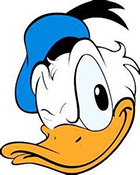Punch 1982
| série: | Magazines étrangers |
| éditeur: | Divers |
| classement: | carton35 |
| année: | 1982 |
| format: | broché |
| état: | TBE |
| valeur: | 0 € |
| critère: | * |
| remarques: | Punch, weekly, 11th August 1982, 45p - Maggie, daughter of Jane - the high and the mighty Information Punch or the London Charivari was a British weekly magazine of humour and satire established in 1841 by Henry Mayhew and engraver Ebenezer Landells, historically, it was most influential in the 1840s and 1850s, when it helped to coin the term "cartoon" in its modern sense as a humorous illustration after the 1940s, when its circulation peaked, it went into a long decline, closing in 1992, it was revived in 1996, but closed again in 2002 Punch was founded on 17 July 1841 by Henry Mayhew and engraver Ebenezer Landells, on an initial investment of £25, it was jointly edited by Mayhew and Mark Lemon, it was subtitled the London Charivari in homage to Charles Philipon's French satirical humour magazine le Charivari reflecting their satiric and humorous intent, the two editors took for their name and masthead the anarchic glove puppet, Mr. Punch, of Punch and Judy; the name also referred to a joke made early on about one of the magazine's first editors, Lemon, that "punch is nothing without lemon" Mayhew ceased to be joint editor in 1842 and became "suggestor in chief" until he severed his connection in 1845 the magazine initially struggled for readers, except for an 1842 "Almanack" issue which shocked its creators by selling 90,000 copies, in December 1842 due to financial difficulties, the magazine was sold to Bradbury and Evans, both printers and publishers, Bradbury and Evans capitalised on newly evolving mass printing technologies and also were the publishers for Charles Dickens and William Makepeace Thackeray. the term "cartoon" to refer to comic drawings was first used in Punch in 1843, when the Houses of Parliament were to be decorated with murals, and "cartoons" for the mural were displayed for the public; the term "cartoon" then meant a finished preliminary sketch on a large piece of cardboard, or cartone in Italian, Punch humorously appropriated the term to refer to its political cartoons, and the popularity of the Punch cartoons led to the term's widespread use the illustrator Archibald Henning designed the cover of the magazine's first issues, the cover design varied in the early years, though Richard Doyle designed what became the magazine's masthead in 1849, artists who published in Punch during the 1840s and 50s included John Leech, Richard Doyle, John Tenniel and Charles Keene, this group became known as "the Punch Brotherhood", which also included Charles Dickens who joined Bradbury and Evans after leaving Chapman and Hall in 1843 Punch authors and artists also contributed to another Bradbury and Evans literary magazine called Once A Week (est.1859), created in response to Dickens' departure from Household Words |
| couvertures: |  |
Copyright 2008 - 2025 G. Rudolf
